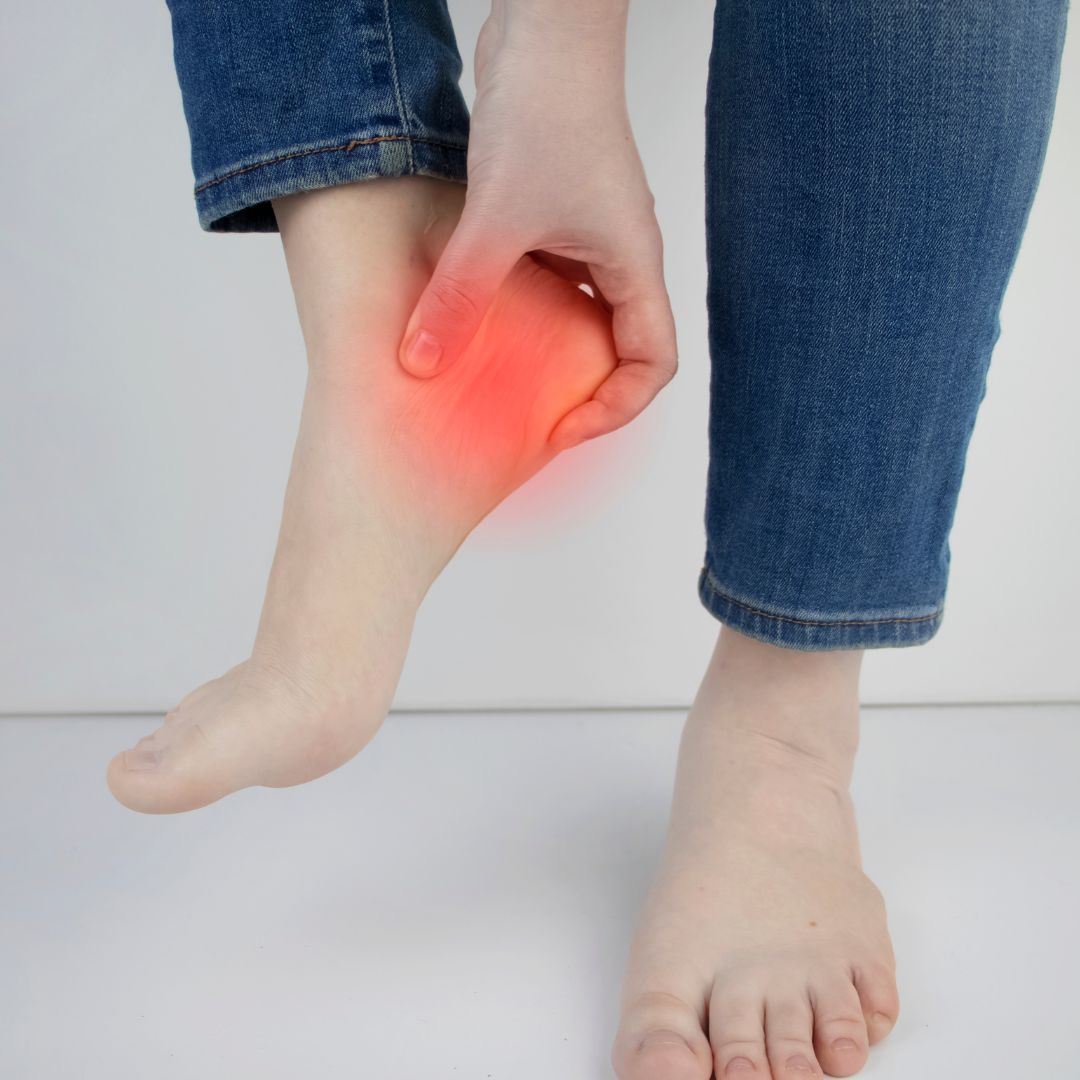Heel Pain
Heel pain is most often caused by plantar fasciitis, a condition that is sometimes also called heel spur syndrome when a spur is present. Plantar fasciitis is an inflammation of the thick band of fibrous connective tissue (fascia) running along the bottom (plantar surface) of the foot, from the heel to the ball of the foot.
Anatomy
Hammertoes can be flexible or rigid in nature. If they are rigid, it is not possible to straighten the toe out by manipulating it. They tend to slowly get worse with time and often flexible deformities become rigid.
Frequently hammertoes develop corns or calluses (a buildup of skin) on the top, side, or end of the toe, or even between two toes. These may be soft or hard, depending upon their location. Corns and calluses can be painful and make it difficult to find a comfortable shoe, but even without corns and calluses, hammertoes can cause pain because the joint itself may become dislocated.

Causes
Symtoms
Treatment
Non-Surgical Treatment:
The first method of treating hammertoes begins with accommodating the deformity, and is indicated in mild deformities and functional abnormalities. The goal is to reduce friction and relieve pressure on the painful area.
Conservative treatments for hammertoes are often limited because they cannot correct the bone deformities involved. There is no way to stop the progression or reverse the deformity without literally moving the bones back into the correct position and realigning the joint. This can only be accomplished with surgery. If conservative treatment fails or the hammertoes progress to the point where conservative treatment is no longer a viable option, surgical intervention may be needed to correct the deformity.
Surgical Treatment
Minimally Invasive Bunionectomy
Dr. T.J. Ahn does a minimally invasive ambulatory surgical technique to correct bunions. It involves making a small incision less than 3mm to remove the bony exostosis or bump located along the side of the foot. He then makes another small incision on the top of the big toe to bring it into proper alignment or position. The small surgical incisions enable the surgeon to use fine specially designed instruments to obtain the best cosmetic result.
Sometimes additional procedures may be required such as correcting a second hammertoe or low metatarsal bones often seen in conjunction with bunions. These procedures are also done with the minimally invasive incision surgery and the doctor would be able to determine if this is needed during your foot exam, which would involve x-rays unless you have had some recently taken.
Surgery is performed under Fluoroscopic viewing. There is generally less trauma to the tissue and surgical times are lessened with this technique, reducing pain and recovery time. Less suturing is necessary and often times no sutures are used. Postoperative patients ambulate immediately and are often placed in a surgical shoe or boot to aid ambulation.
MIS surgeons are able to rely on an external compression dressing with taping/splinting for stabilization immediately after surgery, eliminating the need for pins or screws enabling immediate ambulation. Most of the time it is unnecessary to fuse the toe joints.
Getting back into regular type shoes depends on rate of healing and amount of swelling, which is very individual. You will have a bulky dressing the first week. Dr. Ahn usually likes to see you back at the clinic after two to three days for redress, if physicality allows, or 5 days after surgery for our out-of-town patients. In one week your dressing is changed to band-aids or bandage strips, a spongy material toe separator and disposable ace bandage type wrap which you yourself change daily. This dressing is worn three to four weeks. No dressing is usually required after this.
Please call us at 773-989-2500 or click below to schedule an appointment online!
